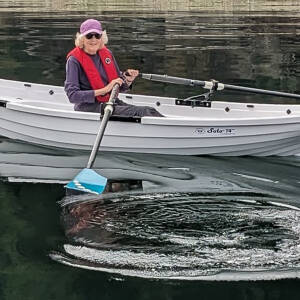A few thoughts on Photographing People
The book club book discussed yesterday was Mary Coin by Marisa Silver. It's about Mary Coin, the woman (real name Florence OwensThompson) who was photographed in the1936 famous “Migrant Mother” picture by Vera Dare (real name Dorothea Lange) and a totally fictitious character Walker Dodge (does bring to mind Walker Evans…) who investigated family histories and tied events together in this novel in a creative but incorrect way. It was a huge help (and a better read, IMO) to have read Linda Gordon’s biography of Dorothea Lange. (in the open book) So many interesting questions about these 2 women and their separate economic hardships, marriages, child rearing and gender roles. And the ethical ramifications of taking photographs: ..Dorothea was working for the Farm Security Administration under President Roosevelt and his New Deal, photographing the farm workers during the great depression of the 30s as propaganda to elicit more support. This photo, one of 6 taken of Florence and 3 of her 7 children when published in the paper, brought instant supplies to that particular camp but Florence had moved on by then.. Dorothea took notes on each of her subjects but didn’t get any names, and I think she did have respect to not shoot the embarrassing poverty these subjects lived in. The government instructions were not to “pose” anything, but to “document” and photographers who moved a rock or a suitcase to make a better composition were chastised. Can’t write too much here——It’s a good but sad story to read and there was much discussion about the reasons for taking so many photos today at all —positive and negative..and how many of our memories are not the the actual event but from the photo of it. And how about the color version of this black and white photo here on the contemporary novel????????
One of our members brought photos from her family of “exotic” posed natives from Alaska from the early 1900s which was reminiscent of Edward Curtis and his documenting the Indian tribes of the nation around the same time period, often posing them and dressing them. Is this ethical? but how would anyone know how they did once look? There is an episode in Mary Coin, where the young Mary (Florence, who is part Cherokee from Oklahoma) is paid to wear an “Indian princess” dress for a photo and how “queer” she felt, how it made her feel strong and diminished at the same time.
I’m putting the link to blipper Kendall’s recent questions elicited by the current exhibition at the Portland Art Museum of Edward Curtis and some contemporary Native Americans - she can pose the questions better than I ! - it was timely to have these for our discussion. (thanks, Kendall!) I could write a lot but this is already way too many words...
And Oskar appreciates the good wishes for his birthday yesterday (really!) and I've put some very candid
shots on flickr. I didn't realize the watercolor filter was on in my little sony (!) but they're sort of interesting...

Comments
Sign in or get an account to comment.


